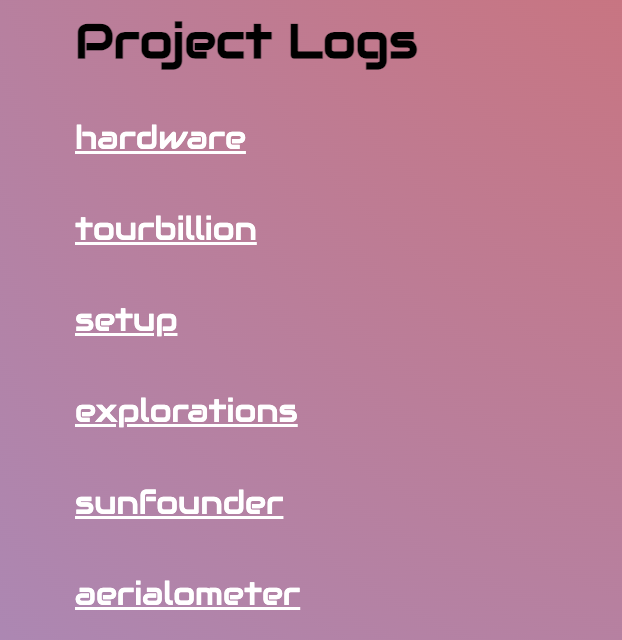I’ve spent the past four weeks (I’ve got two weeks left!) at Recurse Center (RC) in Brooklyn, with the intent of programming at the edge of my abilities, to borrow their words. For the past few years, my role as a staff engineer has frequently taken me further from the programming and coding work that got me into the industry in the first place, and I miss it! When I was a junior dev and recent bootcamp grad, I frequently spent time in the evenings coding up personal projects or learning new concepts. More recently, I’ve found that I gravitate towards hobbies that take me far away from the computer, such as powder coating, writing, linocut, cooking, or anything else I can do with my hands. But still, I miss writing code just for myself.
During my first week at RC, I was reflecting on why I’ve shifted away from coding as a hobby. Burnout surely played a role, but I also identified that the cognitive demand required to “pick back up” where I left off was really weighing on me. It’s not easy to spend, say, an hour “now and then” working on a side project. I have to spend that time ramping up on what I was building and why, remember why I last got frustrated, remember how to run the code, etc. And, while a list of GitHub repositories provides some way for me to list my projects, it’s not quite sufficient for my needs – it’d require that I keep all my READMEs up to date and put a lot more thought and effort into organizing knowledge than I really want to. I’d prefer if my knowledge were already organized for me.
I also had planned to be more intentional and diligent about note taking during my time at RC. I find it’s easiest for me to take daily notes by creating a new file each day. This approach makes it really easy for me to answer the question about what I completed or discovered on any given day, but it wouldn’t serve the need of helping me ramp back up on a project that had been neglected for a while. I was inspired by how Reed organized his projects on his website and decided I wanted to build my own little spin on it. Maybe there was a way that I could take notes the way that it was easy for me, but transform them into something that would also be easy to consume at a later point in time.
Thus, Logbook was born! This was one of my earliest projects at RC, although admittedly a simple one.
Requirements
- Allow me to take quick and easy daily notes in markdown. These should be able to be presented as a daily log.
- Allow me to tag the notes with a particular project or topic. Daily notes should be able to include notes across many projects, the same content should be able to be tagged to one or more projects, and not all of the content must be tagged.
- Content tagged with a particular project should be presented in chronological order, with date headers, for easy project-based consumption at a later time.
- I shouldn’t need to do anything special to deploy this. Pushing to my repository should be enough.
The Solution
I’m already familiar with GitHub Pages and Actions. Since GitHub Pages can host static content, I figured that if I could write a simple script to convert the markdown into static content then I could easily deploy it with Actions. So, the biggest problem to solve would then be figuring out the best way to parse the markdown.
Luckily, I found the kramdown library, which is a Ruby library for parsing markdown and converting to HTML. It’s also pretty fast! After playing around with it, I found it would work well for my use case, partly because it makes it very easy to extend their built-in converters and also because of its Attribute List Definitions.
Let’s look at the attribute list definitions first. These definitions allow
for defining arbitrary key-value pairs in the markdown itself, which are parsed
by default into HTML attributes. In my case, I chose to use the key project
to denote when a particular block of content is associated with a project. The syntax
looks like this:
My really awesome notes about the coolest project!
{: project="cool-project"}
kramdown will parse that content and add an attribute to the resulting converted HTML:
<p project="cool-project">My really awesome notes about the coolest project!</p>
While that’s a little weird because project isn’t a “real” HTML attribute, it
works well for my use case because the content is tagged for each HTML element,
including block elements such as <ul> elements. This makes it easy to slurp
up these elements and plop ‘em wherever I need them in my files.
Once I decided on the syntax I wanted to use, I had to figure out how to create a converter which would intercept these elements as they were getting created.
I decided to do this by creating a new converted class that inherits from the standard HTML converter and collects all the elements in a Hash, keyed by the project name. It looks something like this:
module Kramdown
module Converter
class SpecializedHtml < Html
def initialize(root, options)
@collector = options[:collector]
@collect_key = options[:collect_key].to_s
super
end
def format_as_block_html(name, attr, body, indent)
converted = super(name, attr, body, indent)
collect(attr, converted)
converted
end
def collect(attr, html)
return unless @collector
attr.each do |name, list|
next unless name == @collect_key
list.split(" ").each do |v|
@collector[v] << html
end
end
end
end
end
end
My SiteGenerator class can then “simply”:
- Create a project log collector to track all project logs across all daily files
- Iterate through all markdown files in the daily log directory
- Convert all daily log files to HTML using the specialized converter
- Iterate through all the collected project log HTML and build the static pages for the projects
- Make sure the files go in the right directory, etc. etc.
A build script in the directory runs all this code and outputs it to a build
directory that GitHub pages can use to source the content.
The end result includes:
A listing of project logs:

Nicely formatted individual project pages, with content relevant only to that project:

And fully intact daily logs:

Some Takeaways
This isn’t a perfect solution. For one, the implementation is a lil’ funky. Because my converter collects individual HTML block elements, that means if I have multiple paragraphs about the same project, I must tag each one with the project. I’m okay with this tradeoff for now because I wanted the ability to be very selective about what notes are relevant to a project or not. I also tend to take notes in bulleted lists, so I only need to tag the list once.
The build script and my HTML templates are also somewhat brittle. This seems to work fine for now, but it seems that these static site generator projects always balloon into something much more complicated over time. We’ll see if I can keep it simple.
A note about design. I wasn’t sure what template I wanted to use for this site. Sophia encouraged me to play with different designs and design it just for me. It is just for me, after all. So, I went kinda funky with a funky font and a colorful gradient background. And I like it. Feels cute, might change it later.
Only time will tell if this will help address the original project it was designed to solve. Will it encourage me to pick up side projects more frequently? That honestly feels a bit like a tall order. But I did already find some utility in the project notes when pairing with someone on a shared project. We couldn’t decide or remember where to pick back up. A quick look at logbook reminded us where we had left off and got us back on track.
Overall, feeling optimistic about how this tool will support me in the future. As long as I remain intentional about note taking. 😉
